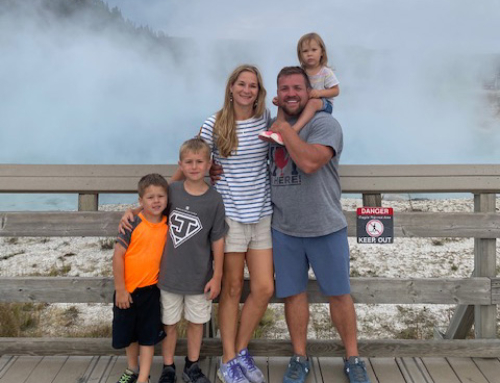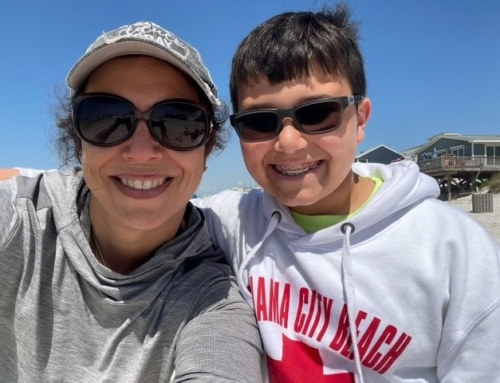“I started by committing to use DCISionRT on 20 consecutive DCIS patients so I could understand the scores, our trends and its impact on the radiation treatment decision.”
Troy Bremer, PhD; Julie Margenthaler, MD, FACS; and Chirag Shah, MD discuss the evaluation and use of DCISionRT in real-world setting, the resulting changes in practice of precision medicine, and the introduction of DCISionRT with novel residual risk subtype.
Dr Bremer kicked off the presentation with an overview of the current challenge of overtreatment of women with ductal carcinoma in situ (DCIS) with radiation therapy (RT) following breast conserving surgery (BCS). Specifically, 80 – 90% of women with DCIS get treated with radiation therapy following BCS, yet 80% of patients won’t recur following BCS. “This unnecessary radiation substantially impacts quality of life for women with DCIS, as well as results in a high cost to the health system. Our goal is to choose the optimal therapy for each patient.”
“We offer a test, DCISionRT, which is an assessment tool. DCISionRT addresses the question of which therapy – BCS alone, mastectomy, TAM or radiation therapy – is most appropriate for each individual. The test can be performed on the core biopsy or on the surgical specimen that is obtained after lumpectomy. DCISionRT combines key information based on 7 biomarkers, as well as 4 clinicopathology factors, to provide a Decision Score of low risk or elevated risk of recurrence.”
“DCISionRT has been validated in approximately 1,500 patients and has been shown to be prognostic for 10-yr risk of recurrence, as well as predictive for radiation therapy benefit. In addition, as part of our ongoing PREDICT study (2,500 patients enrolled), DCISionRT changes the recommendation for radiation therapy about 40% of the time compared to clinical pathology. Our esteemed panel has extensive experience with DCISionRT and will be discussing how they evaluated the test and how they utilize it for risk assessment upfront and later from an adjuvant therapy perspective to determine who needs additional therapy beyond BCS.”
Dr. Margenthaler, breast surgeon, shared how she incorporated DCISionRT and the dramatic shift in treatment that occurred in her practice as a result. “My discussions with patients with DCIS can be as complex as a discussion with a patient with late-stage disease because of the various treatment options including BCS alone, BCS with radiation or even mastectomy depending on the extent of the disease. One of the primary discussion items is the incorporation of radiation therapy – or not- following BCS. So, in that initial discussion, I always bring up the use of DCISionRT to personalize their need for radiation or ideally identify who can safely avoid radiation.”
“When I first considered using DCISionRT in my practice, I looked at how it might impact my surgical planning, as well as how we could use it from a multi-disciplinary standpoint between the entire cancer care team. I was trying to determine which patients I should order it on and what I learned very quickly is that I should order it on all patients. I started by committing to trying it on the next 20 consecutive DCIS patients so I could understand the scores, our trends and its impact on the radiation decision. What I found very quickly is that I could not predict based on routine histopathological criteria which patients would fall into the low or high-risk groups. It’s important to stress that you shouldn’t cherry pick patients because it will be very difficult to see the impact that it has across a wide variety of patients according to age, grade and DCIS size. My recommendation is to do a consecutive cohort of 20 – 25 patients.”
“At my institution, prior to using DCISionRT and its Decision Score, we generally radiated every single patient that had breast conserving surgery for DCIS. We all felt there were patients who could avoid radiation, but we didn’t have a situation where we felt that we could confidently predict which patients. In fact, DCISionRT demonstrated that our biases on who needs radiation is flawed when you get the actual molecular data.”
“We conducted our own 100 patient (all comers) study. Some important points to highlight from our study is first, age alone is not sufficient to classify which patients need radiation. DCISionRT was able to stratify patients according to risk much better than age alone. In addition, if you look at the general assumption that younger people receive more benefit from radiation therapy, you run the risk of potential overtreatment in these patients. So DCISionRT provides that additional information that you need to be able to personalize RT according to recurrence risk.”
“Second, there is a bias that patients who have larger areas of DCIS will benefit greatly from radiation therapy. Again, tumor size failed to classify patients in our cohort, where DCISionRT was able to stratify patients according to risk.”
“Lastly, we have a bias that higher grade is going to result in a higher benefit from radiation. But when we looked at the scores of patients who had grade III DCIS, 53% of them were actually in the low risk DCISionRT Decision Score group, whereas those in the grade I and II, about 50% were in the elevated risk group. DCISionRT was able to stratify risk much better than age, tumor size and grade.”
“What I really want to stress is that the only way to obtain very objective, quantifiable, predictive information about the benefit of radiation is to perform DCISionRT on your consecutive patients and look at the score beyond the standard clinicopathological data. I think you’ll find what I found is that the biology gives us much better insight beyond those clinicopathology features. DCISionRT really helps us personalize care beyond what we had prior to these biologic criteria.”
The webinar concluded with an overview of ‘what’s next’ for DCISionRT. With its new Residual Risk Subtype (RRt) presently in PreludeDx’s product development pipeline, DCISionRT has demonstrated the ability to answer the question of ‘which patients remain at an elevated risk following breast conserving surgery and radiation therapy’?
Dr. Shah, Radiation Oncologist, weighed in “from a radiation oncologist perspective, I don’t want to overtreat or undertreat. I want to hit that middle sweet spot where I’m treating the people that need to be treated. And what you see with DCISionRT is that about 45 – 50% of low-risk patients are reclassified as elevated risk and about 30 – 40% of high-risk patients are reclassified as low risk. So, it helps us deliver radiation to those patients who truly need, as well as target the type of radiation. For example, patients with an elevated risk without RRt, I may offer partial breast, but for someone with an elevated risk and RRt, I may recommend whole breast radiation with a boost. In this population, I think that instead of being concerned about overtreatment, we need to be sensitive to undertreatment. DCISionRT helps us to accurately classify these patients and tailor their treatment.”
To listen to the entire webinar, click https://bit.ly/3KJXeKu
Troy Bremer, PhD – PreludeDx Founder and Chief Scientific Officer
Julie Margenthaler, MD, FACS – Breast Surgeon, Siteman Cancer Center and Washington University School of Medicine, St. Louis Missouri
Chirag Shah, MD – Radiation Oncologist, Co-Director of Comprehensive Breast Program and Director of Clinical Research in the Department of Radiation Oncology at the Cleveland Clinic






